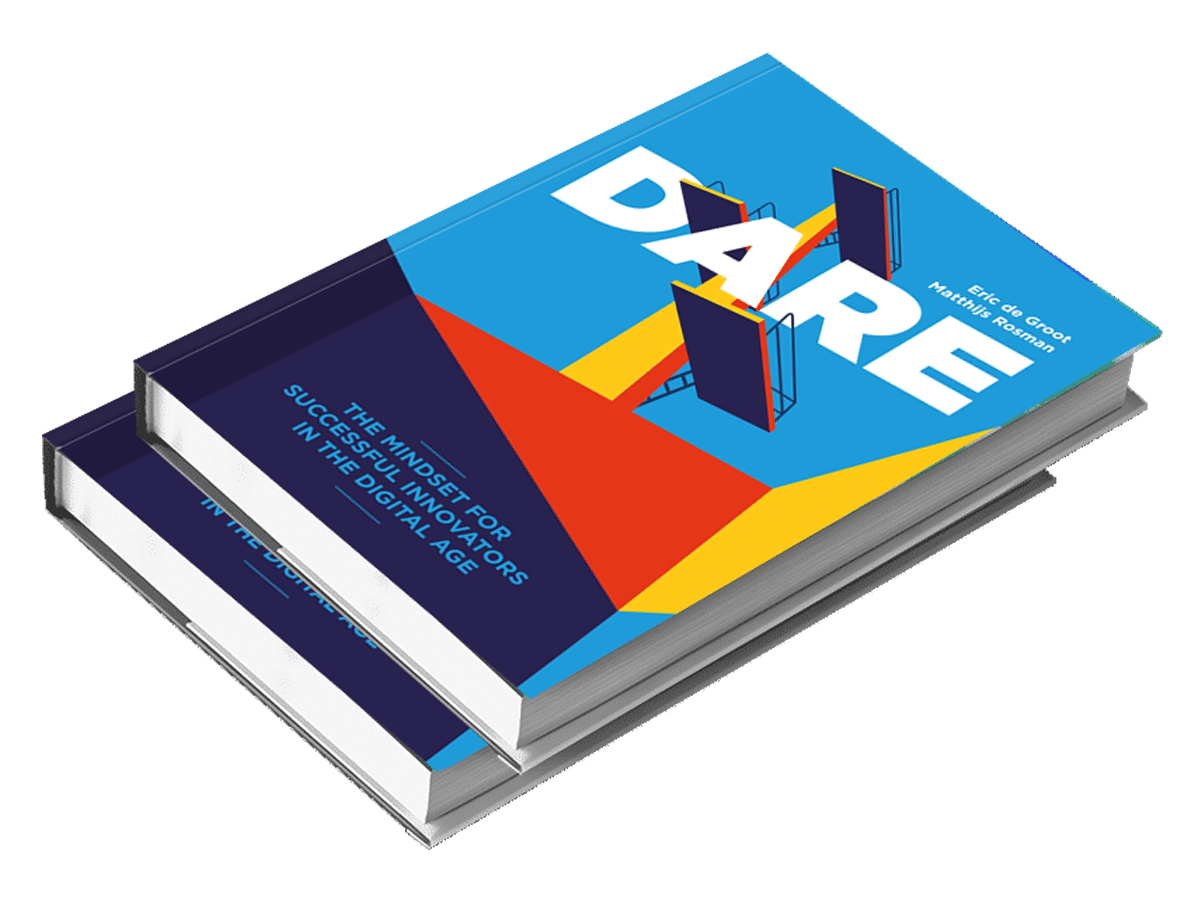If you look up the word ‘endurance’ in a dictionary, the definition reads: “the ability to withstand hardship and adversity.” Execution of innovation strategy is one of the hardest parts of realizing growth. It literally requires a lot of endurance. Endurance refers to disciplined execution. To grinding down to the very end. To making things happen. Along the way, the treacherous ‘valley of tears’ and ‘troughs of disillusionment’ have to be navigated. Endurance is the last key element I like to discuss that finally make up with the other three the DARE mindset.
“However beautiful the strategy, you should occasionally look at the results.”
Sir Winston Churchill
Execution of innovation strategy
An Innovation strategy is greatly energizing when it has finally been committed to paper. Reality kicks in when that same strategy needs to be executed. It takes a great deal of alignment in the organization to see a strategy bear its fruits. Endurance does not only refer to hard, physical labor. It also refers to mental toughness. True leadership is required to execute on strategy. Often, innovation means having to suffer through short-term setbacks in the organization’s performance (‘the transition period’). During these times, leadership is challenged by supervisory boards or shareholders. Their resolve to the chosen direction is challenged when short-term revenue falls, morale drops or envisioned timelines are not met. A level of Dunkirk spirit is required to push on with tenacity.

One of our clients – a consumer goods producer – was facing an existential crisis when their traditional B2B2C business model was being threatened by online pure players. A key element of their survival and future innovation strategy entailed setting up a captive direct sales channel, a risky undertaking considering that 98% of the business was dependent on channel partners. Implementing the direct sales strategy disgruntled the channel partners and sales were immediately in peril. In one of the update meetings we held with the management team of the company, a senior manager commented in despair that his business had entered the ‘valley of tears.’ This clearly was the point of no return. Pushing on was no fun but turning back was a certain and painful death. So, we put our backs into it and soldiered on, encountering hardship and adversity along the way.
Look at innovation strategy like a marathon
To really move the needle, innovative growth concepts need to be scaled. Scaling doesn’t happen overnight. It requires stamina and dedication. If defiance and adventure are governed by sprints, endurance can be characterized as a marathon race. Similar to running your first marathon, a lot of hard work and commitment has to come into play. Corporate innovators and business leaders alike have to put their money where their mouth is. Running a marathon requires commitment, rigor and dedication beyond just the physical toll. Eric can speak from experience having just run his first half marathon at age 53. And that was only half of it.
In order to stay on course, having a greater purpose is crucial. Simon Sinek has popularized the term ‘having a why.’ Why do I get out of bed in the morning? And why should anyone care? Your ambition and vision is a great source of purpose. While you are at it, why not test whether your vision has the power to propel an execution process like a drummer in a dragon boat leading the paddlers in the frequency of their movements?
Getting the right perspective
It is important to realize that each organization requires its own unique approach to the process. No two organizations are alike and to think that everyone can adhere to the same process is ludicrous. Trying to get corporates to innovate at the same pace as startups is setting them up for failure. Sure, corporates can learn the methods and practices applied by startups. But the dynamics are completely different. There is a lot more politics involved, and the stakes are significantly different and vastly more complex. Startup innovators are motivated in a completely different way to corporate innovators. It also makes a huge difference for your innovation strategy if your vantage point is that of a market leader or a struggling follower.
Mentoring, teamwork and partnerships are important factors for successful innovation strategy. We often say that the team is the deciding factor in winning or failing. When we talk about mentoring, we don’t usually refer to ‘gurus.’ The rise of startup accelerators and the venture capital craze has provided a platform for many people to present themselves as mentor or guru. We refer to a mentor as a ‘traveling companion,’ someone who can speak from experience but whose most important role is to be there in times of hardship. Someone who can be a sparring partner and provide insight. Sticking to the marathon metaphor, a mentor is like a pair of broken-in sneakers to a marathon runner: they can take you the distance and will save you some pain, but they won’t do the job for you.
Trust the process
In the end, you have to trust the process. Stay focused on what you can control rather than trying to influence the outcome. In the days before the marathon, a runner needs to taper down his runs. For inexperienced runners like Eric, it doesn’t make any logical sense. However, for any experienced runner this is common practice. The practice of launching products and services early might seem counterintuitive, but the learning process is invaluable. Once you commit to it, you will see the gains. And when you get more and more experienced in the process, the gains will increase.
In many organizations, the largest impediment to realizing their innovation strategy stems from a lack of endurance. Execution is often deemed inferior to strategy. But, strategy without execution is hallucination. Endurance is about sticking to your commitments. Even when the pay-off is not immediately apparent. In the end, achieving innovative growth is down and dirty – and above all hard – work.
We are always interested in your war stories. We are currently interviewing for the sequel of DARE. Want to be included? Hit us up at eric@revelx.nl or matthijs.rosman@revelx.nl. See you next time!

Introducing DARE: The Mindset for Successful Innovators in The Digital Age
Learn how successful innovators and business leaders realize growth with DARE – now Amazon’s #1 best-selling title!
Eric de Groot
Boardroom strategist with unparalleled creative brainpower. Always focused on growth. Creates speed by combining business modeling with inventive pragmatic solutions. Invests in involvement over a sustained period.
Related posts
Step 1. Why every CEO should play the DisruptR game with their team
DisruptR Game for CEOs fosters strategic innovation. Learn…
June 22, 2025
Innovation governance: Why every CEO needs a Growth Board
Growth Board for CEOs is essential. Discover how this…
June 19, 2025
Why innovation belongs on the CEO agenda
Innovation on the CEO agenda is essential. Explore why…
June 16, 2025



